We never thought we would find ourselves in the same building, let alone anywhere near over 500 taxidermy frogs in Split, Croatia — but here we are at Froggyland! In a seemingly small brick building, an over 100 year old collection of taxidermy frogs has become one of Europe’s strangest museums. We found this hidden gem in the Atlas Obscura, a guide to some of the most curious places in the world.
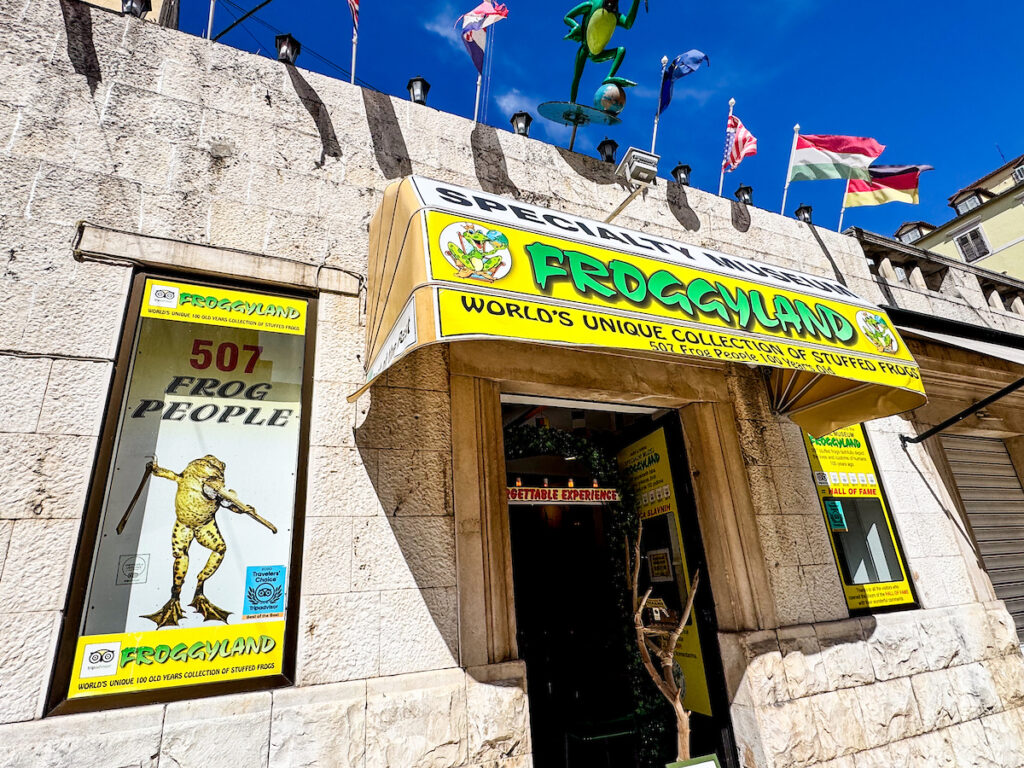
In the mid 19th century, a new art was making its way into the mainstream. A greater understanding and the subsequent interest of nature gave new life to animals of all types through the process of taxidermy — the process of preserving animals for display. Instead of mounting a deer head on a plaque or stuffing a fox in a sly, sneaking position, many found it amusing to instead taxidermy animals in a personified way.
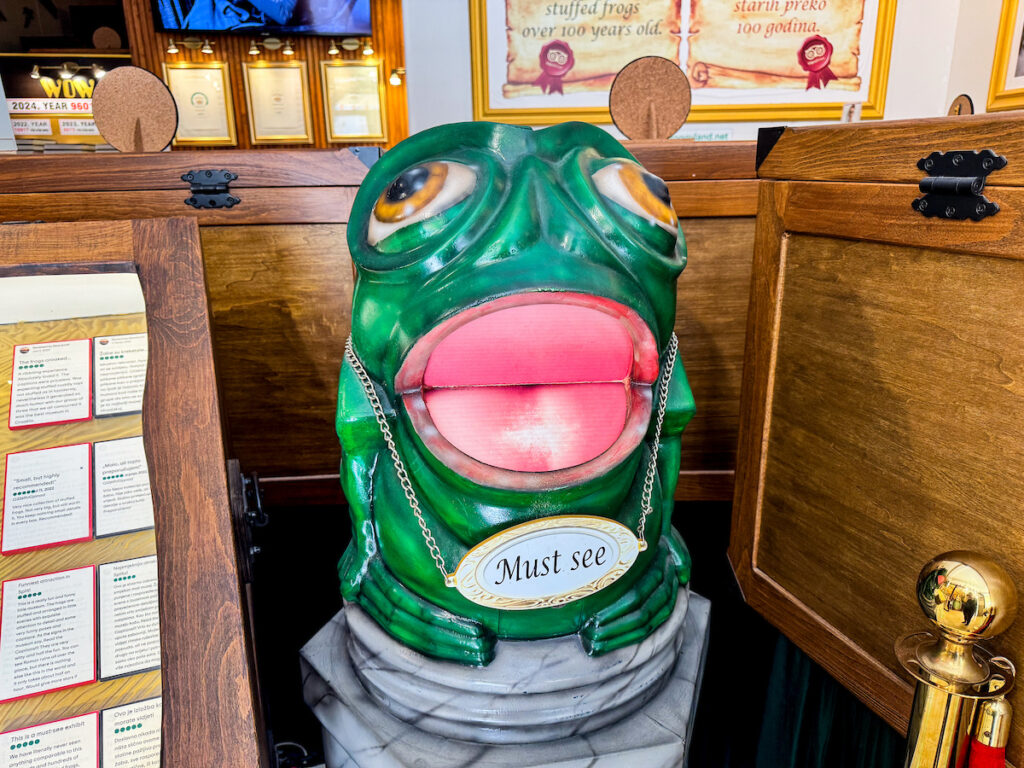
All of the frogs were created by Ferenc Mere who was an average man born in 1878 to Hungarian parents. He grew up in the former Yugoslavia, near a pond that was teeming with frogs. Their unique croaks and frequent ribbits were a familiar sound to Mere, who found a love for frogs — and for taxidermy. Between 1910 and 1920 he worked on creating his exceptional collection of expertly taxidermied frogs.
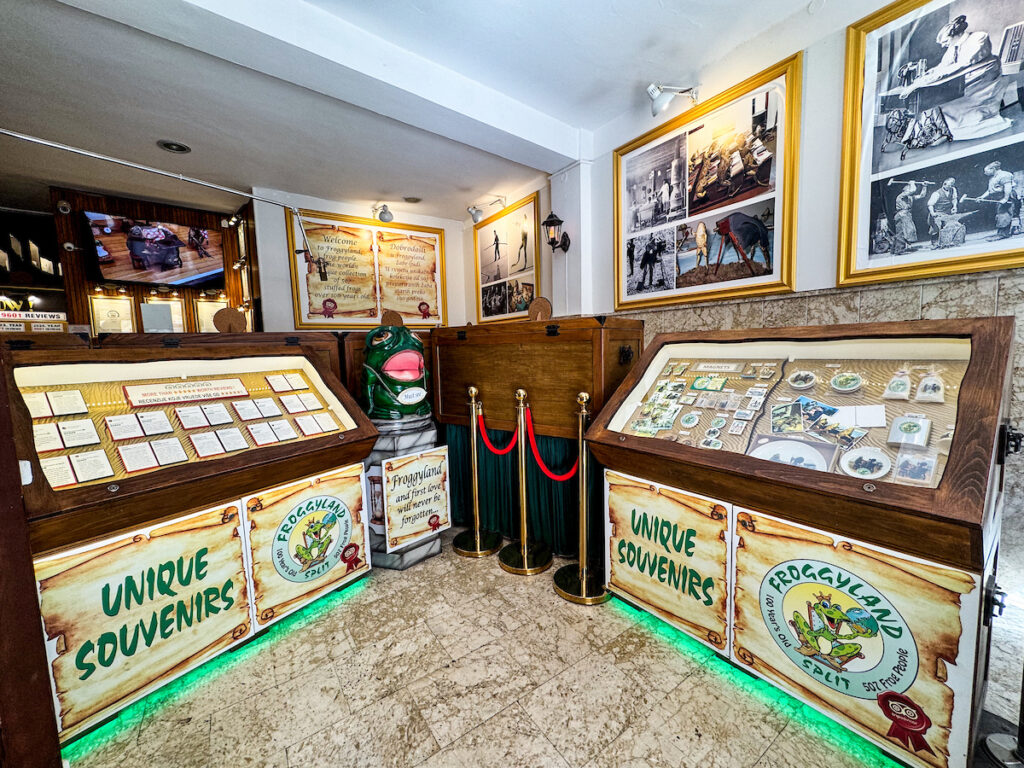
Taxidermy of amphibians is incredibly difficult due to their thin slimy skin that has a tendency to shrink. Fortunately for Mere, he mastered the art of amphibian taxidermy and even took it up another level by posing them and placing them in lifelike scenarios. Mere created his own special form of preservation for these delicate animals, which still remains a secret. It is known that he stuffed them with cork and sawdust through their mouths and replaced their eyes with glass.
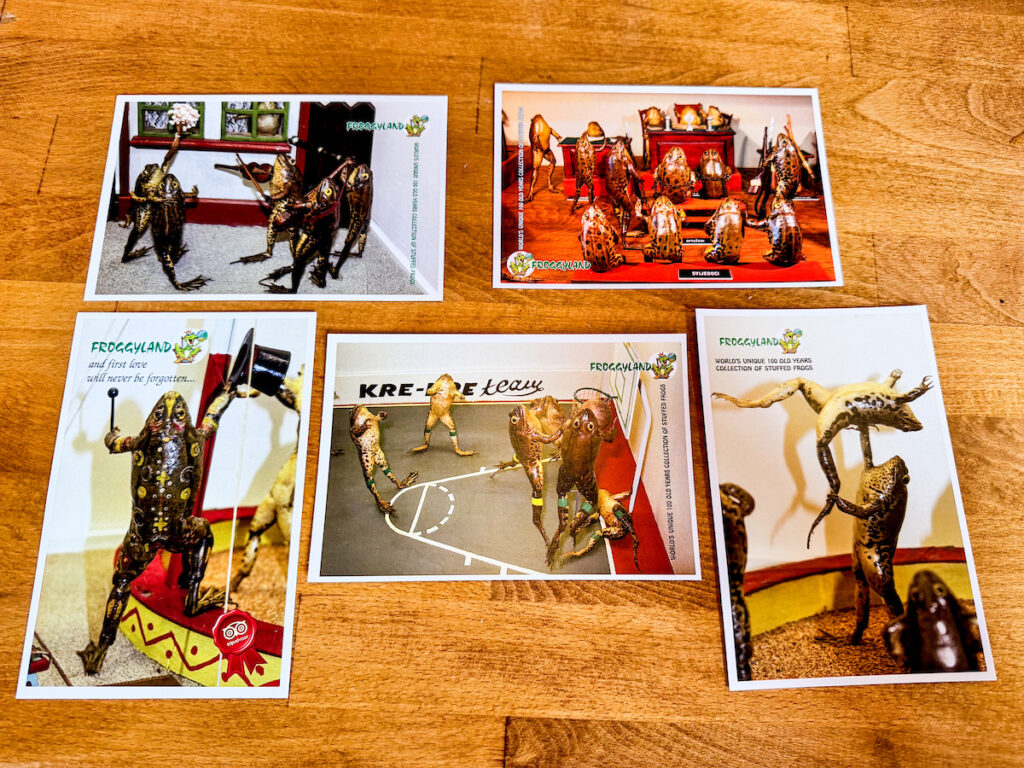
Mere created over one thousand of these taxidermy frogs during his lifetime, many of which were lost to time or owned by someone around the world. His 507 remaining preserved frogs are now on display at Froggyland year round. The museum’s 21 displays show frogs in all different situations like learning in a classroom, performing acrobatic techniques, and playing in an orchestra. Each model is incredibly detailed and meticulously planned out.
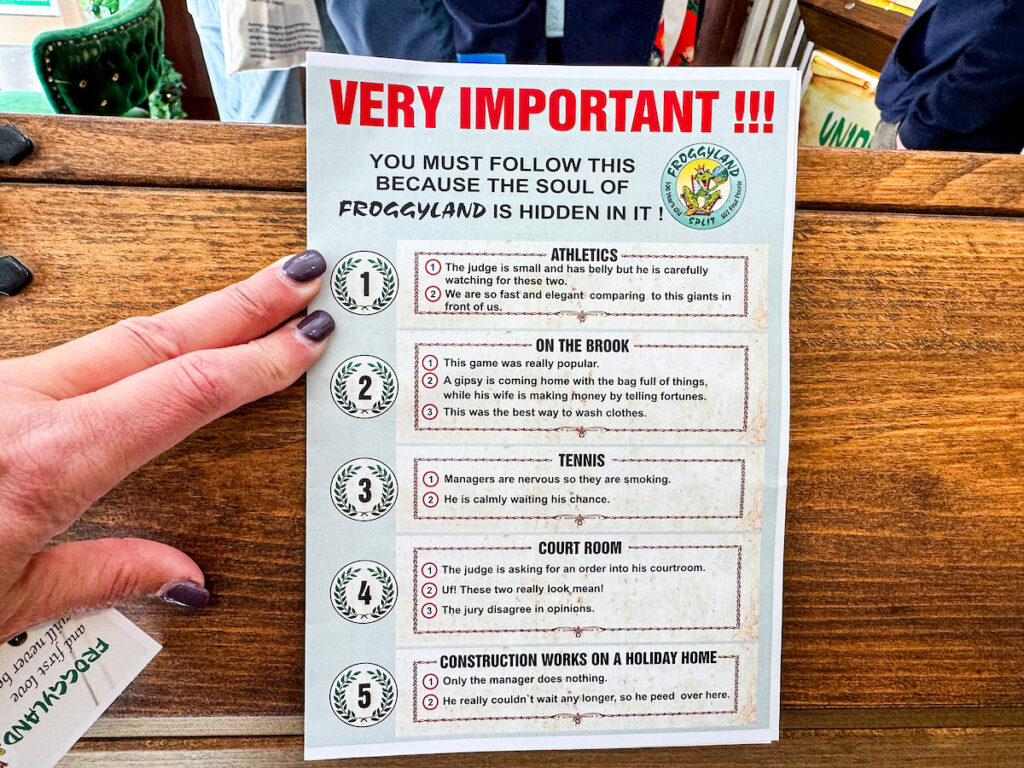
Froggyland is open from 10 AM to 10 PM everyday. After paying a small entry fee, plan to spend half an hour to an hour looking through the museum. No photography is allowed, but you can purchase prints of many of the tiny frog scenes. After all, when will you ever have the opportunity to see something like this again?

